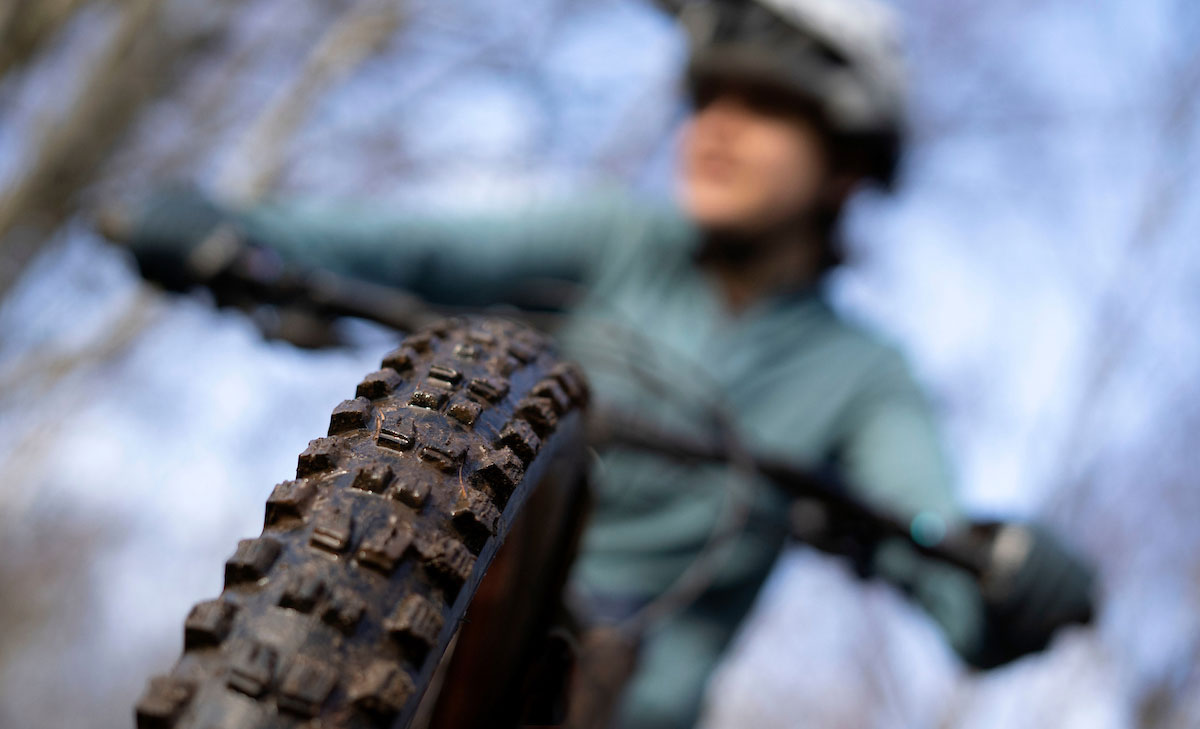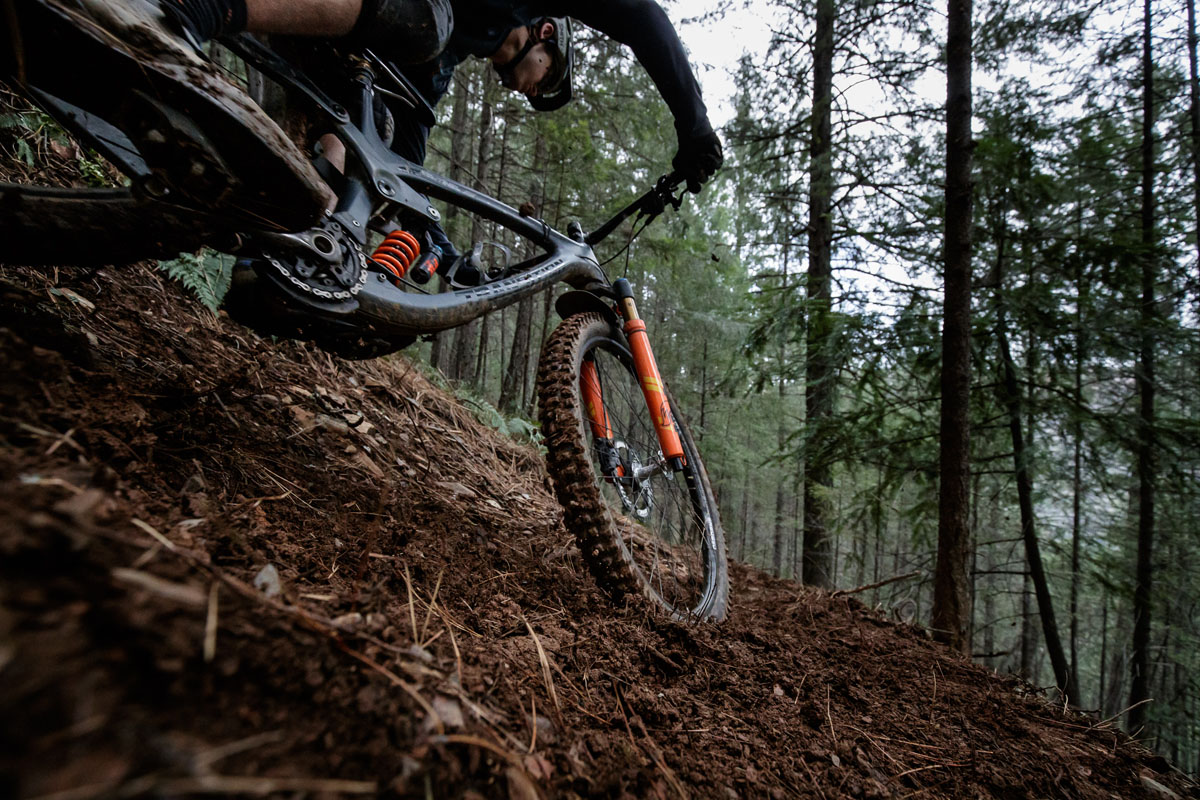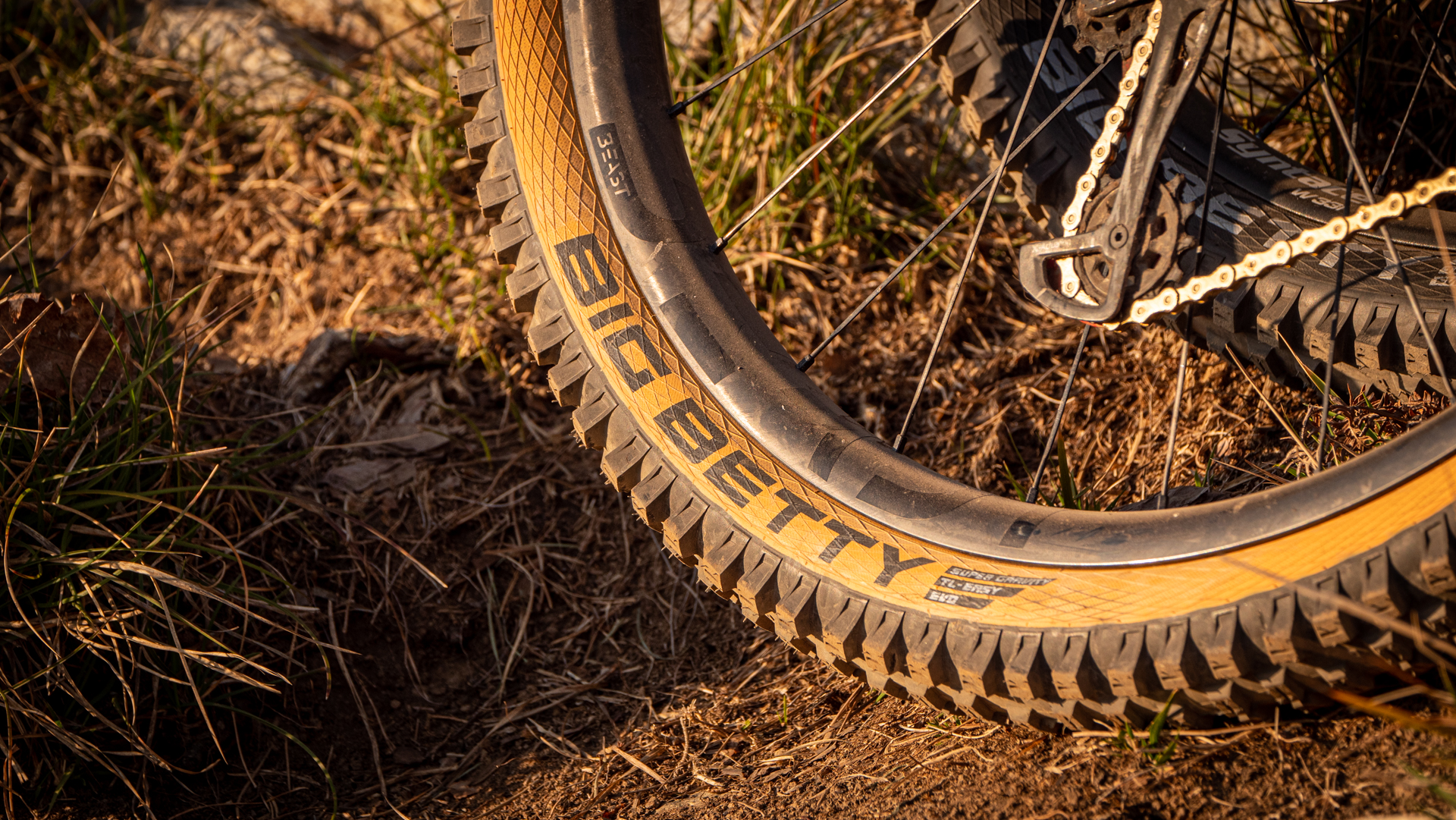MTB Tires: How do wheel size and tire width relate to cornering grip?
Does wheel size play a part in determining the level of cornering grip a tire provides? The same tire, run at the same pressure, fitted to a 27.5” wheel or a 29” wheel (same internal rim width), will surely have a slightly different contact patch shape with the ground. My question is this: How does the shape of that contact patch change, and how does it influence cornering grip?
WTB: I wanted to have a little fun while answering this question, so I took a couple of our Judge 2.4” tires and tried an (un)scientific experiment.
I rolled out 1kg of children’s craft dough to an even depth of 5mm, inflated the tires to 25 psi, then repeatedly pressed them into the dough with the same force and hey presto – a measurable contact patch!
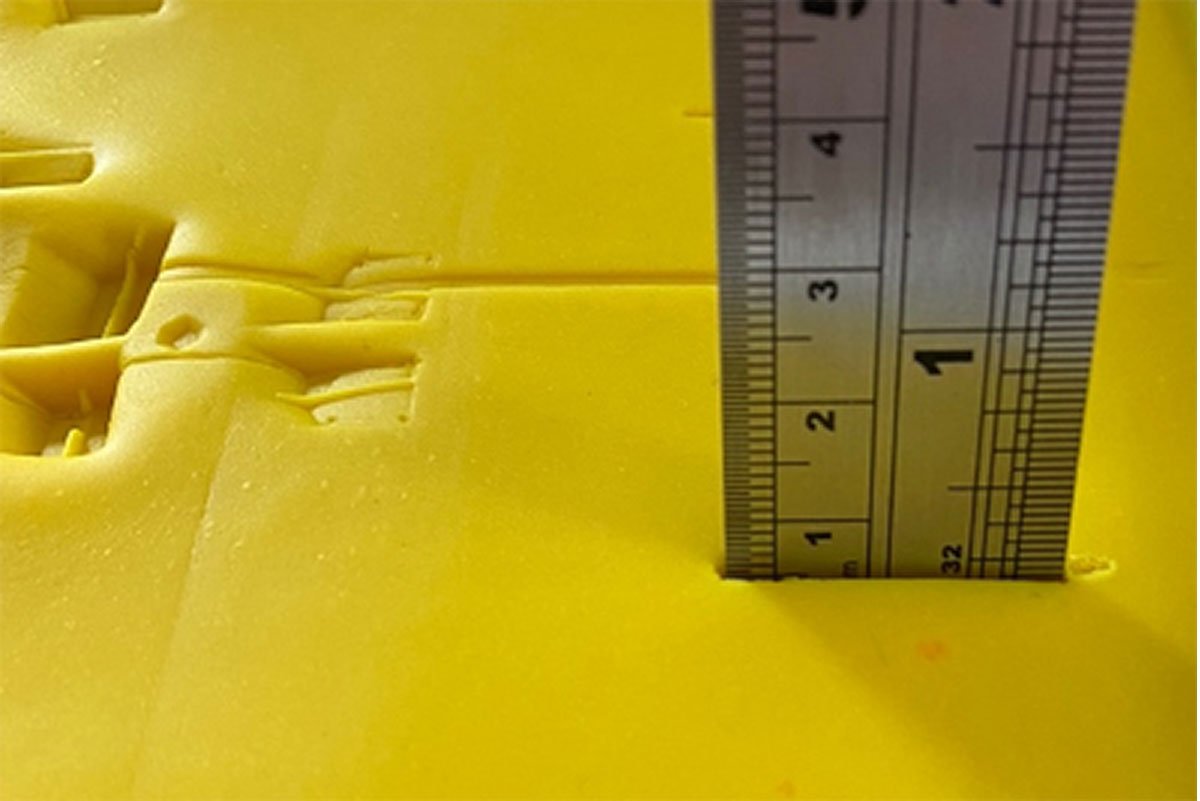 Now, this is far from a lab test and certainly wouldn’t stand up in court, but with all variables kept as equal as possible there are definitely visible differences in how the 27.5” and 29” tires interact with the ground.
Now, this is far from a lab test and certainly wouldn’t stand up in court, but with all variables kept as equal as possible there are definitely visible differences in how the 27.5” and 29” tires interact with the ground.
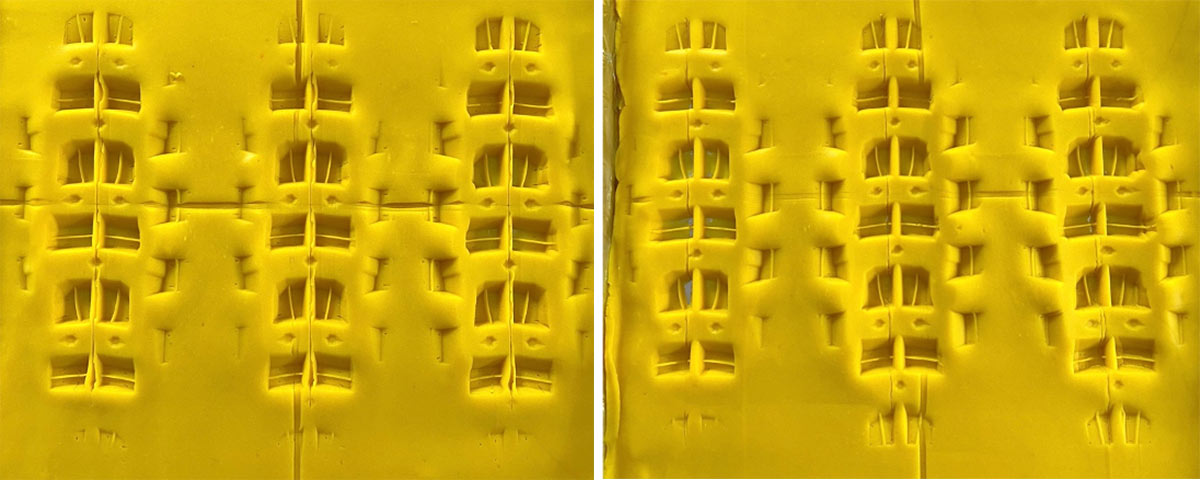
At first glance there doesn’t seem to be a huge difference between the wheel sizes, but when you look closer you can see that the imprints at the extreme ends of the contact patch are more prominent, which means in the real world you’re likely to have more knobs and edges working in your favor.
So, to answer the original question: As expected, the shape of the contact patch grows in length as the wheel size increases and this in turn can mean there is more tread biting into the dirt on your behalf…
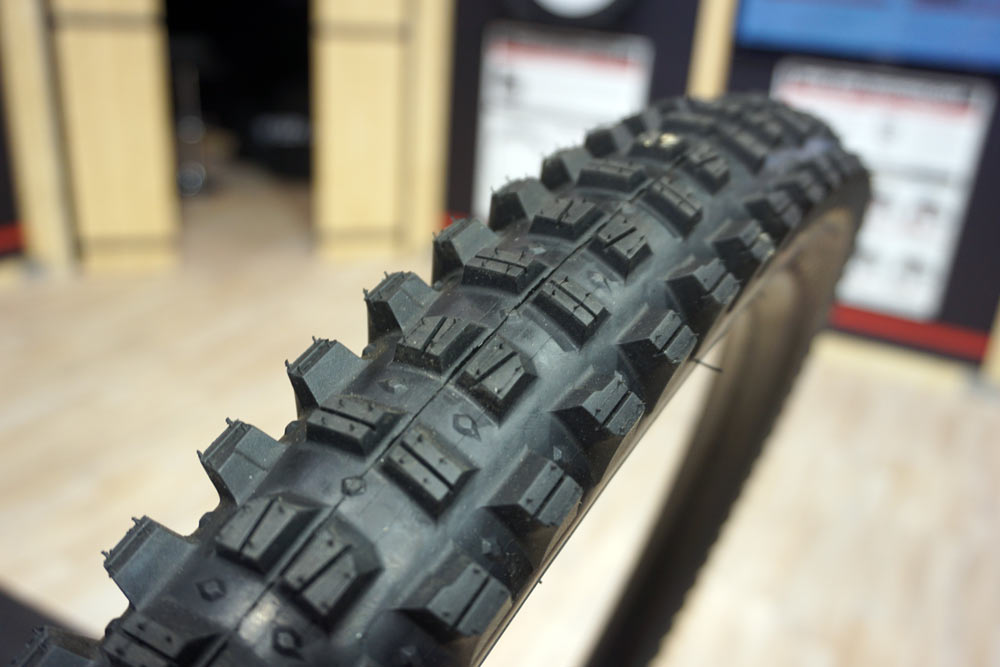
It’s also worth noting that if the tire in question has a more tightly packed tread design, then it’s possible you’d have even more knobs in contact with the ground for the same area. Maybe that’s an experiment for the future…
Maxxis: For this question, we use a 2.5″ Assegai tire as an example (25 psi / 90 kgf / 20 deg leaning angle). Based on our footprint test, the contact length of the 29” tire is 7% longer than that of 27.5” tire. The contact area of the 29” tire side knobs is 12.6% more than that of the 27.5” tire.
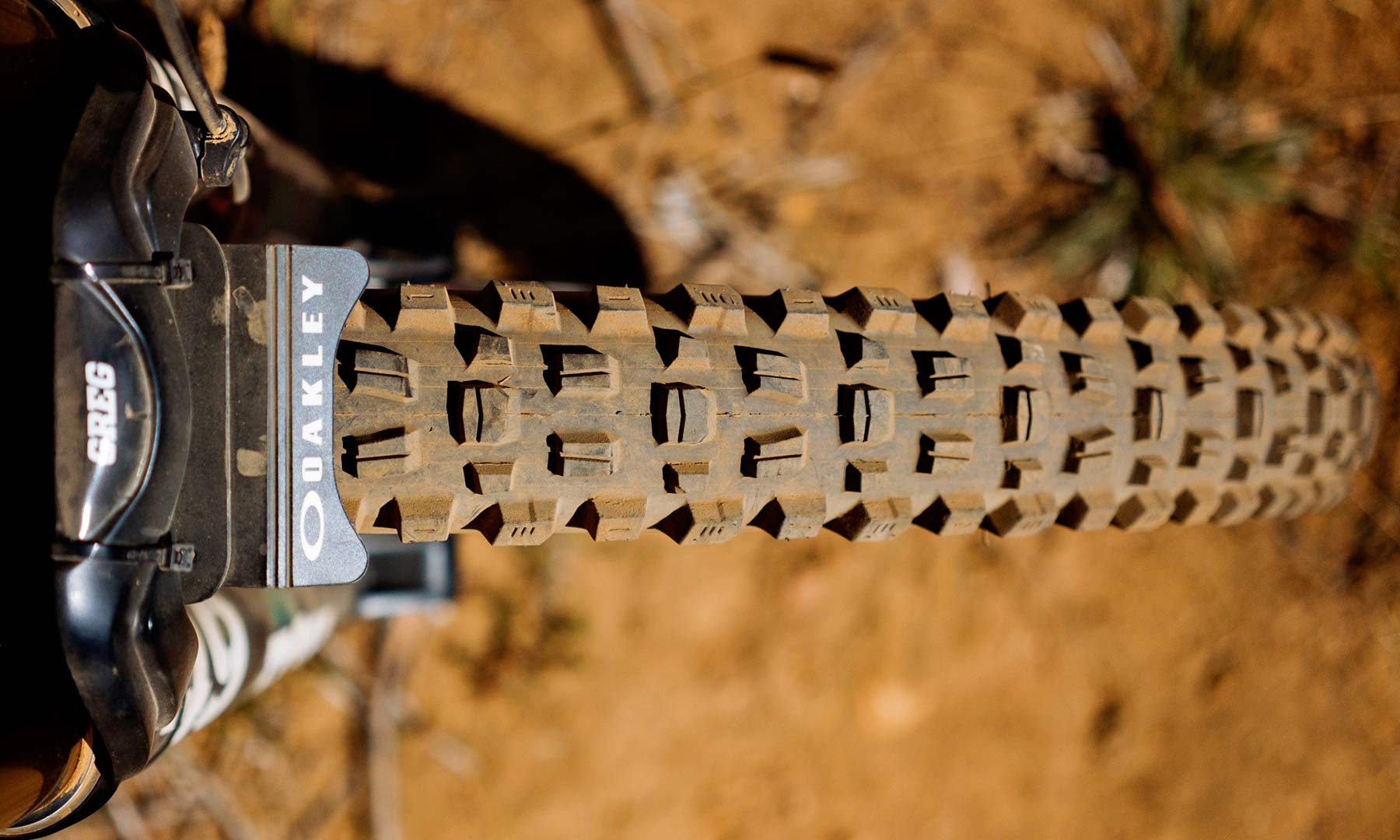
When applying the same pattern to different sized tires, we account for changes in contact patch shape by making slight adjustments to spacing and/or knob dimensions when necessary. This ensures the most consistent performance as possible between sizes.
Continental: Firstly, it is the footprint area which affects the grip: the larger the diameter, the larger the footprint will be so this will generate more grip (larger diameter = larger contact area = higher grip).
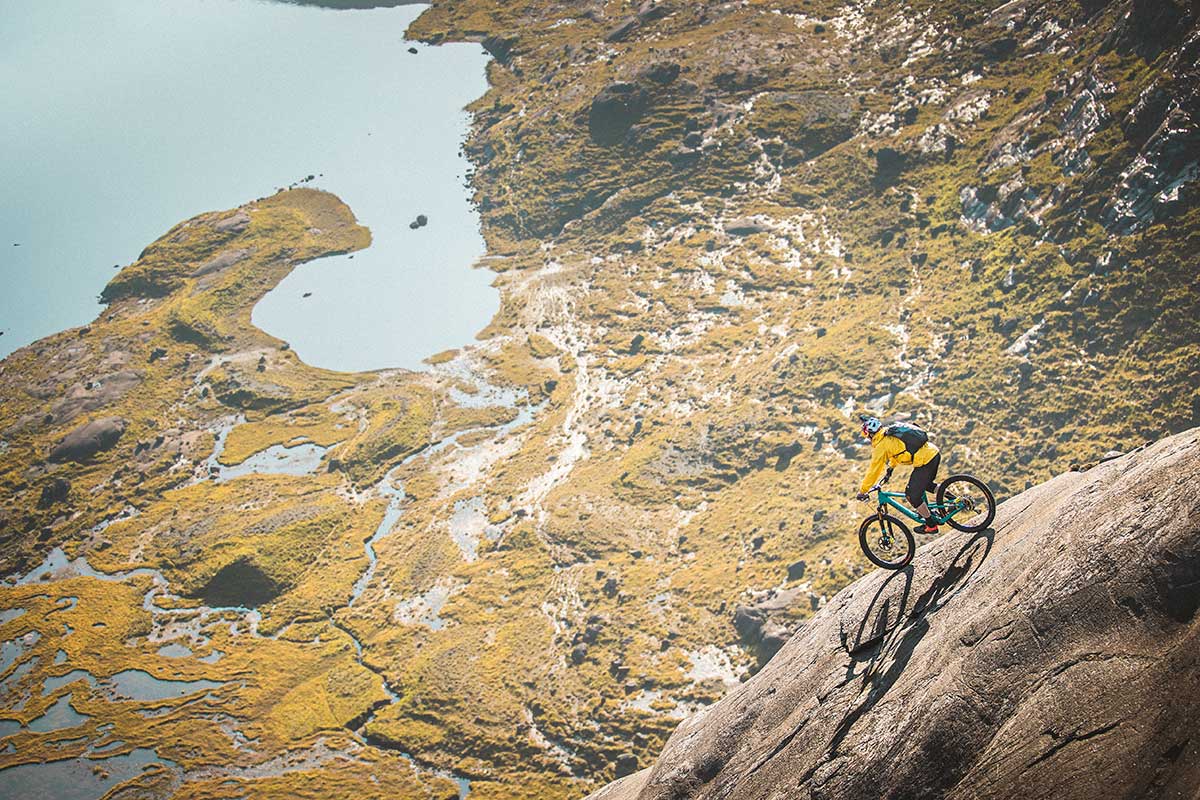
But, another important aspect of a larger wheel size is the “angle of attack”. The larger the wheel diameter, the shallower or flatter the angle is. This makes the wheel easier to roll over obstacles and ensures greater stability, control and comfort. On the negative side, however, the weight naturally increases and a larger wheel and it is a little less agile compared to a smaller wheel.
Schwalbe: If you only change the wheel size and take the exact same setup (tire, pressure, internal rim width, weight load), the contact area will be identical and won’t be influenced by the wheel size. That´s due to the formula A = F / p where A is the contact area, F is the weight load and p is the pressure.

Talking about pressure – it should be taken into account that with 29” wheels, you’re facing a slightly higher tire volume. Therefore, the tire pressure should be slightly decreased in order to maintain the same tire sag as with a 27.5”.
In theory, bigger wheel sizes have longer, but therefore smaller contact patches whereas smaller wheel sizes have shorter, but wider contact patches. Because of the longer contact patch of a 29” wheel you could argue that there are more knobs interacting with the terrain resulting in more cornering grip.
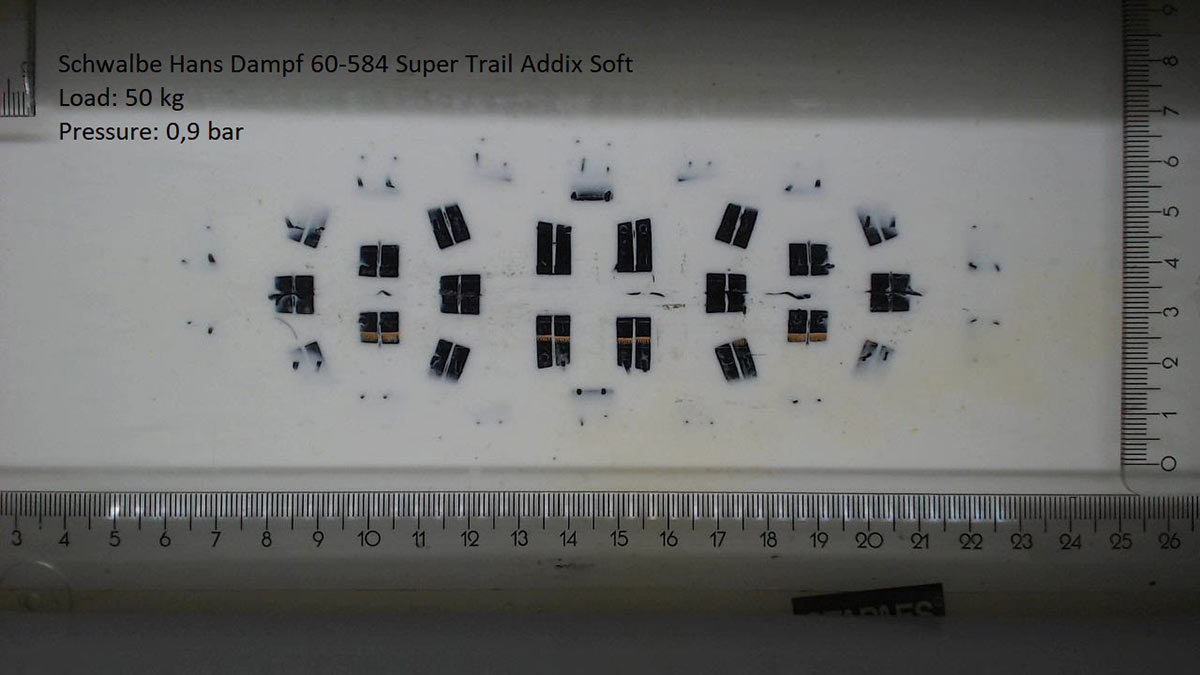
According to our tests with a Schwalbe Hans Dampf (in Super Trail with Addix Soft) with 0.9 bar and a 50 kg weight load in 60-584mm (27.5 x 2.35”) compared to the same tire in 60-622 (29 x 2.35”) the difference is within the measurement tolerance when you take a look at the contact patch. So, the cornering grip should be more or less equal, but our feeling is that a 29” wheel is more good-natured when riding at the limit.
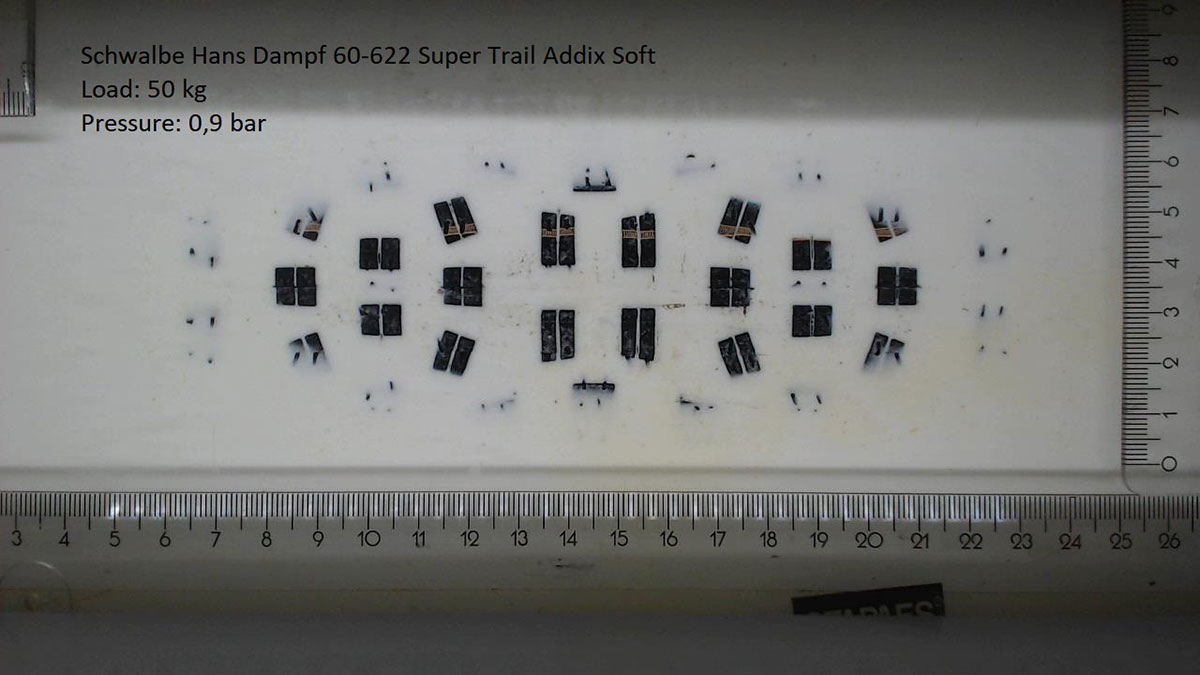
However, due to the bigger diameter of a 29” wheel they better maintain contact with the ground when hitting obstacles and thus offer a feeling of better grip and control. This is mainly where the advantages of a 29” wheel are.
Michelin: A 29” tire will have a 12% longer contact patch and will provide more grip for the same load at the same pressure. As a result, the longer contact patch will provide improved braking and cornering.
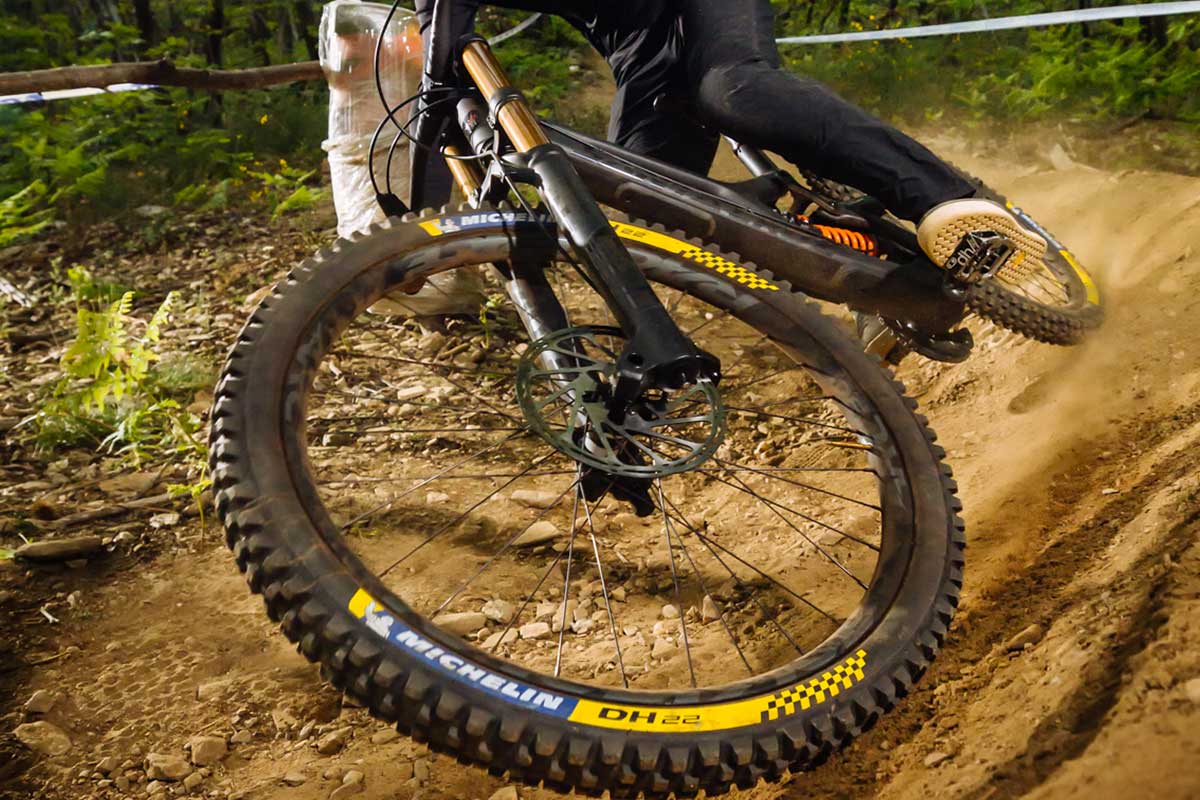
In flat turns, an increase in camber results in a decrease in contact patch size. Riders experience the same effect on both 27.5” and 29” sizes. In most cases, the center of gravity is higher on a bike with 29” wheels and it requires a rider with a higher skill level to optimize the grip potential. OE bike manufacturers are working to optimize their designs to make 29” wheels easier to ride.
The same idea applies to berms even though you do not have the off-camber effect of a flat turn. The larger contact patch of the 29” wheel will provide more grip at the same speed in a berm.

With 29” tires, the internal volume is bigger so you can carry more load with less air pressure compared to a 27.5” tire. Riders can decrease air pressure on 29” tires compared to 27.5” tires to carry the same load. As a result, the contact patch will be even longer and wider, ensuring more grip.
Vittoria: Assuming the same tire and rim width, the 29er will have a slightly longer and more narrow contact patch, while the 27.5” tire will have a slightly wider and shorter contact patch. This is due to the curvature (radius) of the tire being tighter on the smaller wheel, which then deforms more laterally as it’s loaded, forming a wider contact patch.
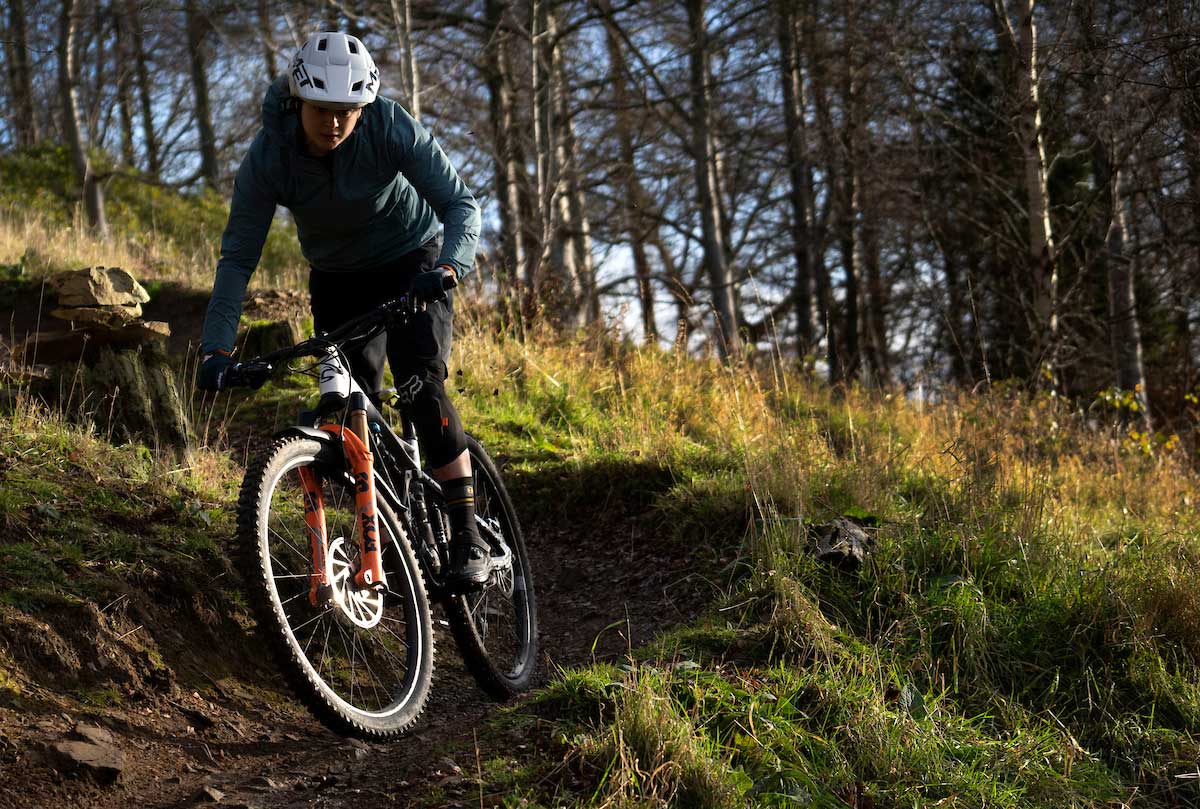
In terms of cornering grip, it’s important to consider how many times the pattern repeats (aka the tread period) within the contact patch. For example, on a mud tire, there is a lot of spacing for cleaning which means that few side knobs will actually be engaged at any given time while the tire is leaned over. On a 29er, there will be more side knobs engaged, whereas on a 27.5” more of the center tread will be working in concert with the side lugs.
I see that a lot of MTB tyre brands are pushing wide tires more and more. They say that a wider tire offers more grip, but I don’t understand where they are coming from with this statement. I have always found a narrower tire (2.3”) bites terrain better, making it easier to put the tire on its edge when cornering. I find it offers more precise handling and makes last minute line choice change easier too. A wider tire kind of “surfs” over the ground and looses grip more easily (in my experience). Am I missing something here?
WTB: It’s true that a wider tire can offer more grip but that’s not always the case. If the conditions are particularly muddy, then a narrower tire will better cut through the softer mud and bite into the harder dirt underneath. However, if the conditions are dry then a slightly wider tire may be able to offer more traction as it should have more knobs in contact with the ground.
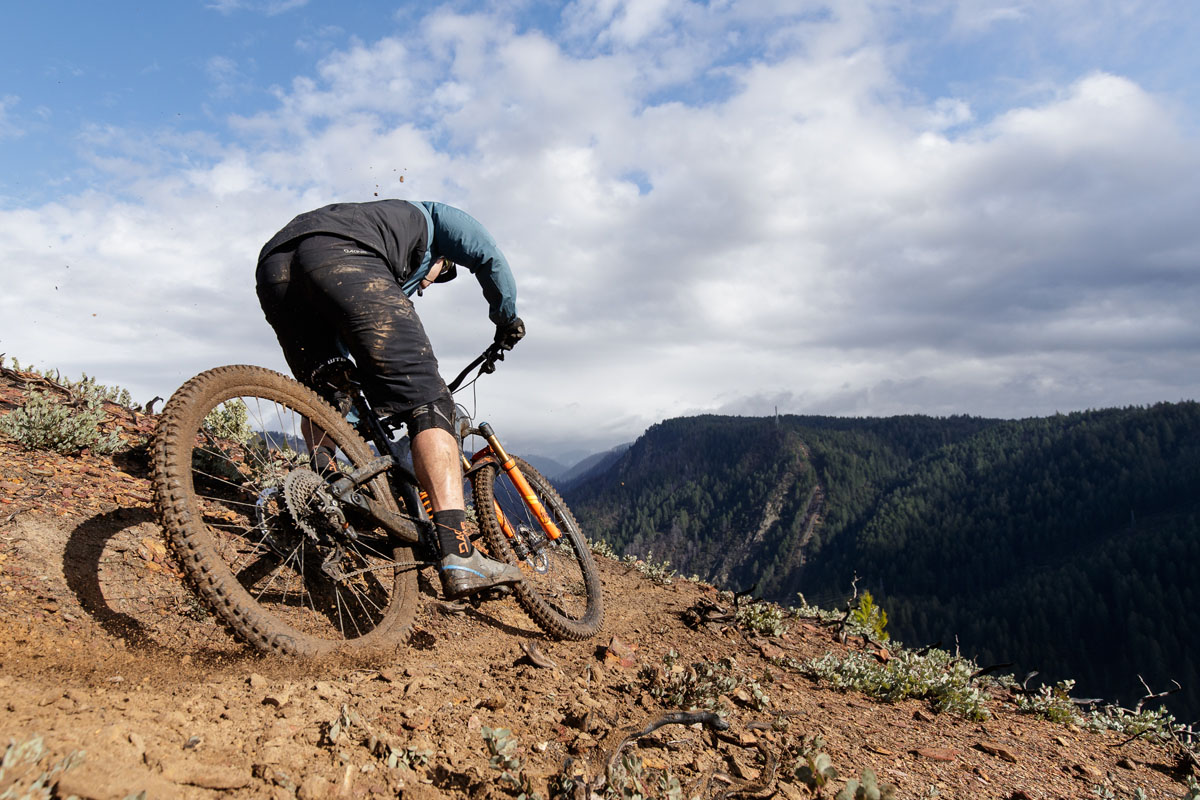
Then there’s the whole factor of tire pressure. You can generally run wider tires at lower pressures because they provide more air volume between the trail and the rim. Lower pressures allow the tire to conform to the terrain and maximize contact. Narrower tires at higher pressures won’t conform in the same way and will sit atop the terrain rather than grabbing onto it.
The importance of paying attention to your tire pressures is something we can’t stress enough. We’d like to take this opportunity to share our favorite PSA…check your tire pressure before EVERY RIDE.
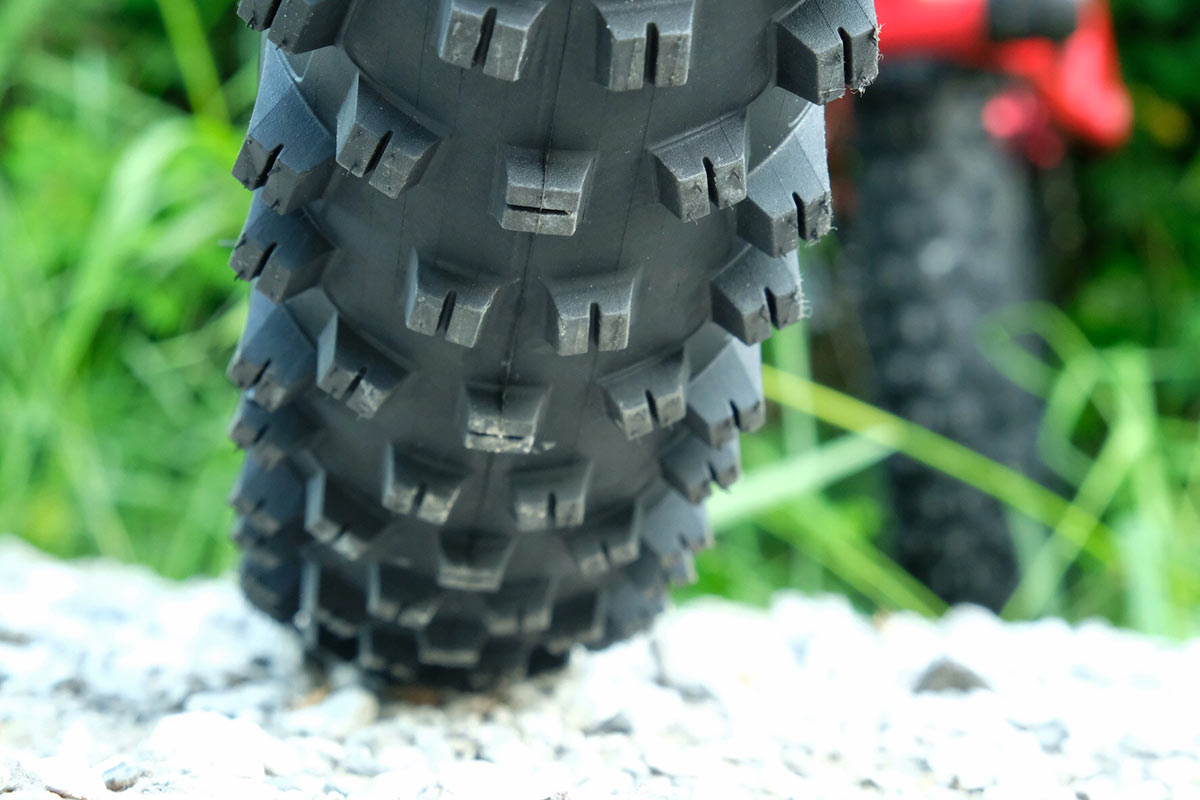
When it comes to tire widths, we don’t believe there’s one size to suit every usage. It really depends on where you ride, how you ride, and the conditions in which you ride. This is why we make a lot of our versatile treads in multiple widths. We encourage you to check out the WTB FAQ page where we cover a lot of these topics in both text and videos.
It’s also worth noting that as mountain biking evolves, demands on the tires change as well. Both the bikes and trails of 15 years ago place different forces on the tires than those of today, so we’re constantly working to make sure we stay ahead of the game.
Maxxis: This depends on the terrain where you ride. In general, a wider tire offers a larger footprint contact area. The larger footprint provides more grip on hard and flat surfaces, and better ‘floating’ capability over dry/soft sandy terrain.
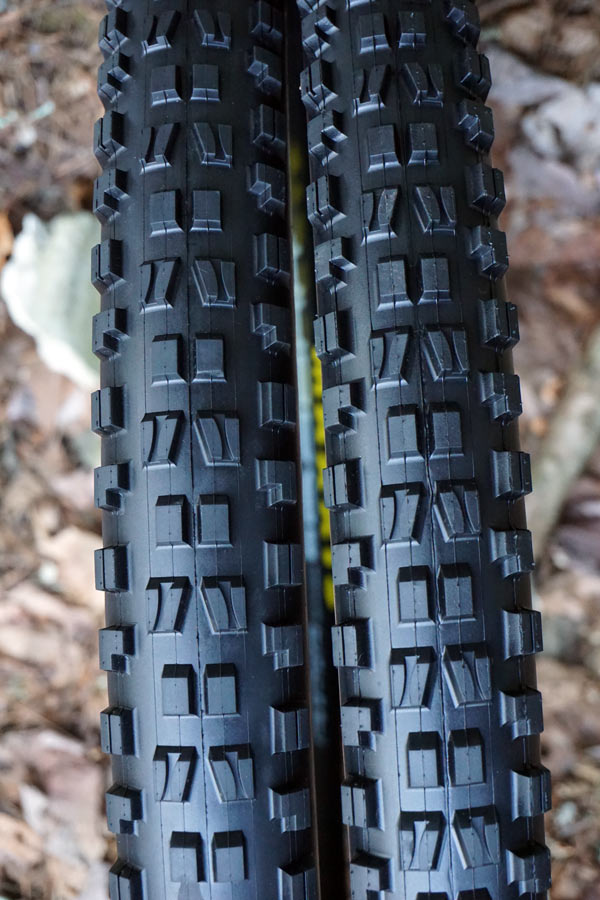
However, the narrow tire can dig into the soft/intermediate dirt terrain effectively, and provides the better traction than a wider tire if the tread depth is the same. For example, the extra volume of a 2.6″-2.8″ is very helpful in maintaining consistent floating traction when riding somewhere with dry sandy terrain.
Continental: In a nutshell: the wider the tire, the larger the contact area, so there are more studs that are engaged and active and more grip can be generated. But, there are a few exceptions where it makes sense to use narrower tires, such as on wet or muddy conditions or snow-covered surfaces.

The narrower tires can dig into the surface and bring all knobs and studs into contact with it to generate the grip. Wider tires “dig” less into the surface and could possibly “float or surf”, especially at high speeds.
Schwalbe: First off, just like a 29” wheel has a higher tire volume resulting in an increased tire circumference, a wider tire offers the same advantages as those that come with a bigger wheel size, to some extent.
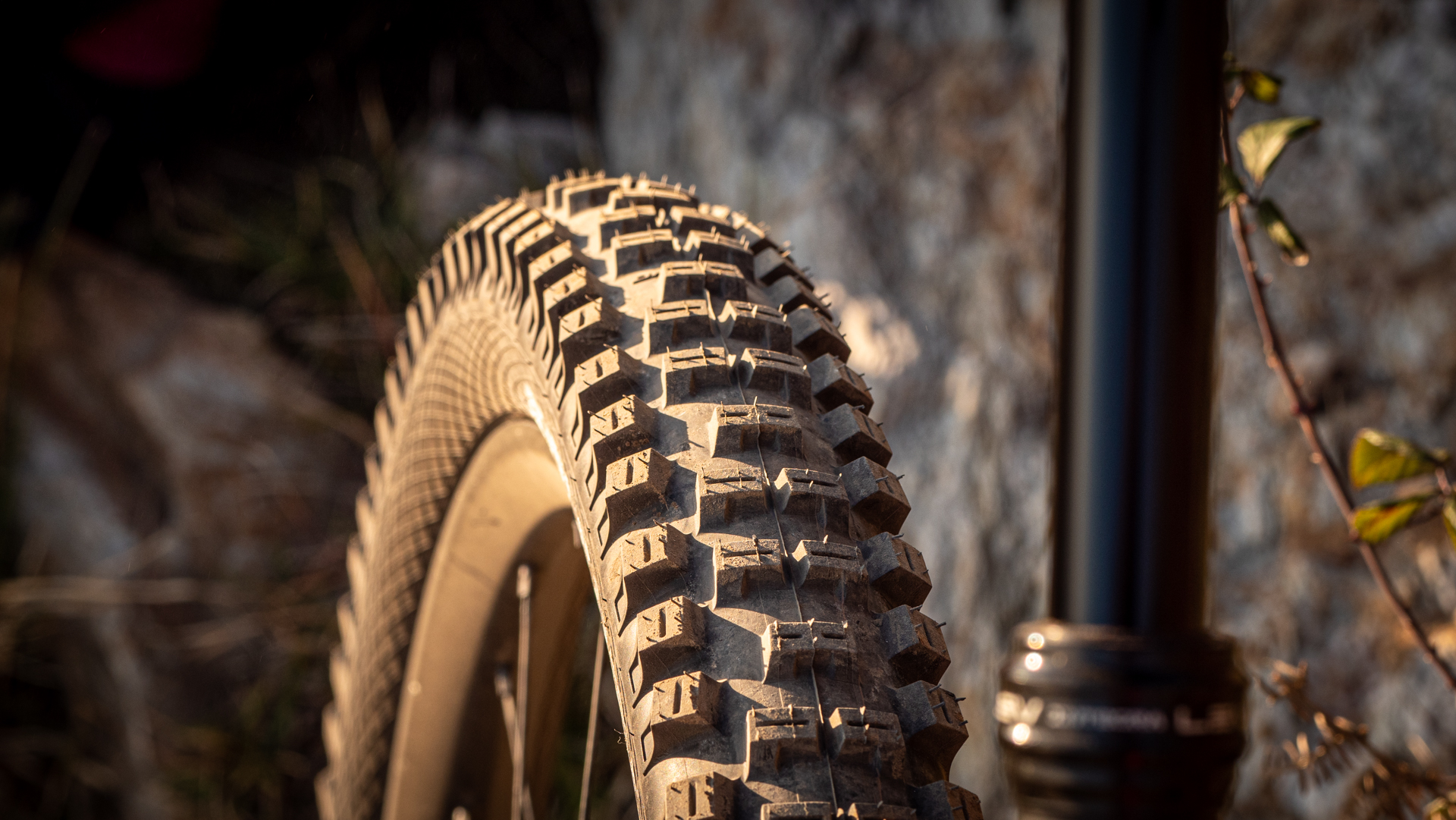
However, a 2.6” tire will have a shorter, but wider contact patch. Because of the shorter contact patch, the 2.6” tire will have less cornering grip but, depending on the pattern, slightly more braking and forward traction. The downside of the wider tire is that due to the same formula we mentioned above, it has to be ridden at a lower pressure in order to maintain the same amount of tire sag.
This also results in a more linear spring curve and thus, makes the tire prone to snake bites. Furthermore, high volume tires are more sensitive to slight pressure changes, so it can be hard to get the sweet spot between lateral stability and snake bite resistance on one side and suppleness and grip on the other side. Because of that, from our experience, a lot of people ride with too much air pressure with wider tires.
Michelin: This concept is true. It’s important to remember that you can use a lower air pressure with a 2.6” tire than with a 2.3” tire, and you will have less pressure on the ground with a 2.6” due to the larger contact patch. As a result, there is less pressure on each of the knobs.
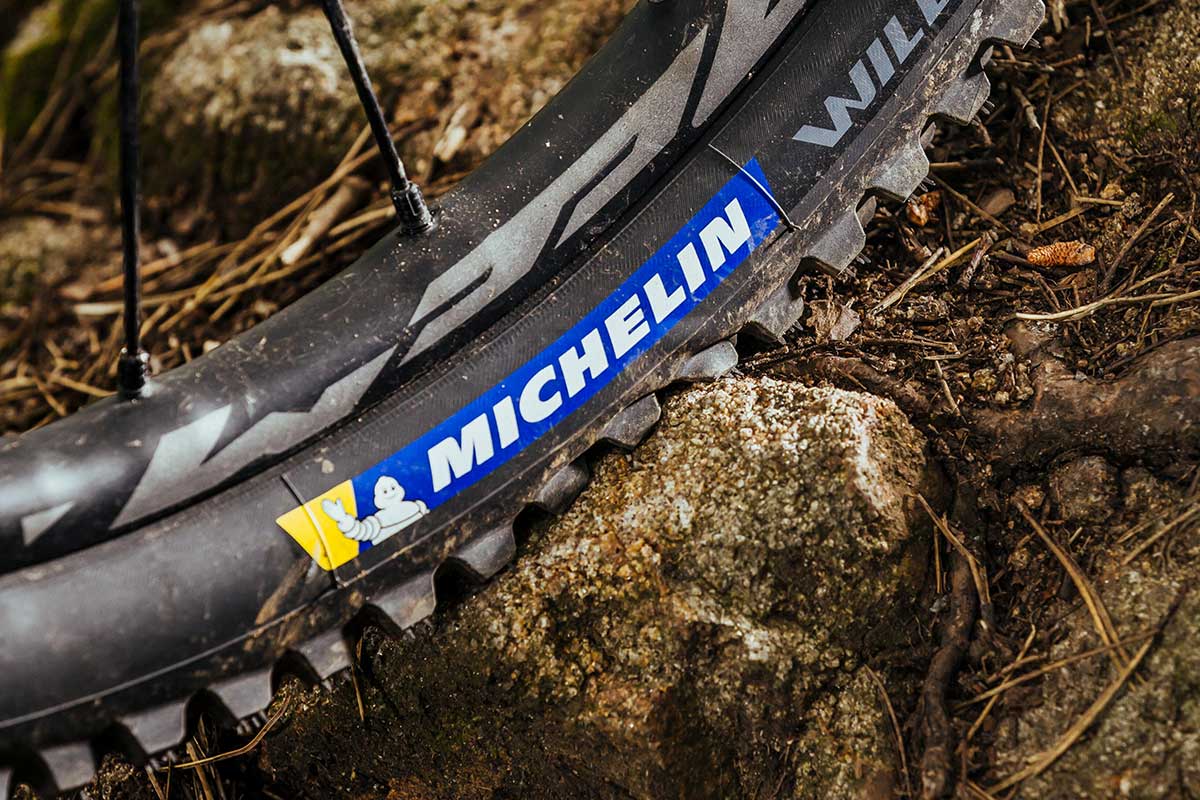
A basic experiment anyone can do to understand the effect of increased pressure on hard packed terrain is to take a pencil eraser and put it on the table. If you lightly load it and try to make it slide, and it will slide slowly. If you overload it and push it, it will provide more grip on the table. The more pressure you use, the more grip you will experience.
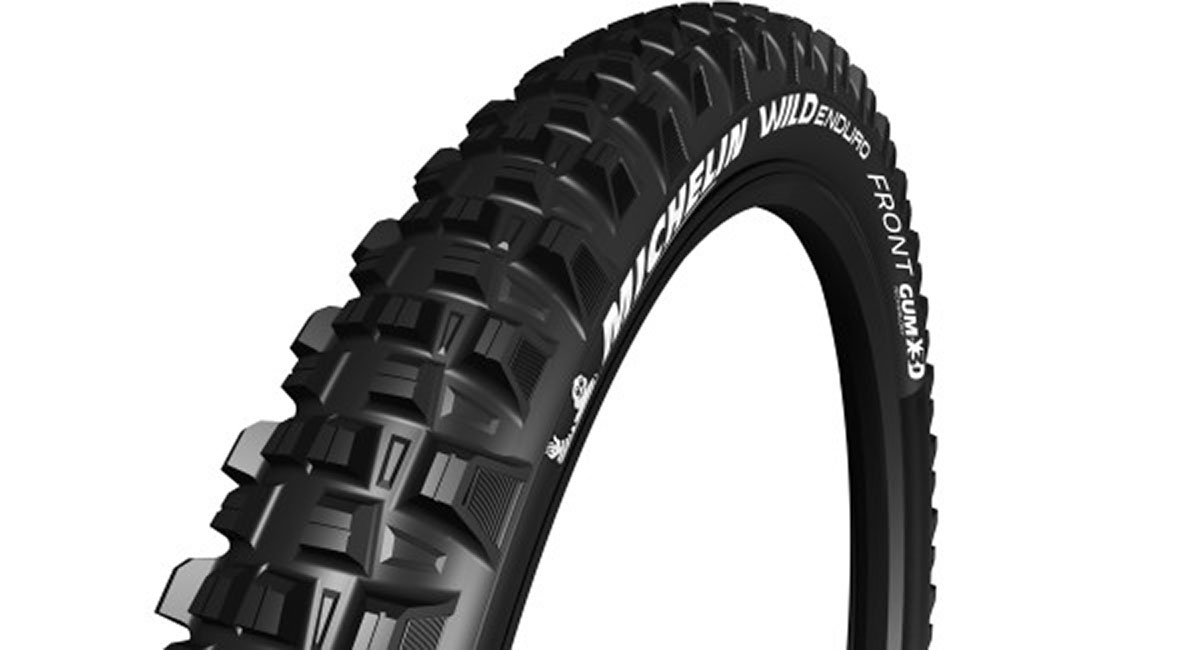
To increase grip on softer terrain, you will need to penetrate the top layer of dirt or mud to grip the firm ground beneath. The more pressure exerted by the narrower 2.3” tire will more effectively penetrate the soft loam to grip the firm ground below, thus reducing the “surfing” effect.
For faster riders, the 2.3” tire is more responsive to direction changes and more precise for where you want to put the tire.
Vittoria: Certain “Plus” tires are scaled improperly when using a tread that was proven at a smaller size. In some cases, the side channel is less pronounced, and won’t allow a rider to weigh the side tread in a way that cuts into the terrain to provide grip. Instead, these tires spread that rider/cornering input over a larger area of tread, and produce that floaty sensation.

With any larger sized tire, the trick is to use the larger casing to provide more of what is needed for the intended use, and not simply more air volume.
Thank you so much to the following contributors to this week’s Ask A Stupid Question:
- James Heaton, European PR Guru at WTB
- Alexander Hänke, Product Manager at Continental Bicycle Tires
- Robert Mennen, Product manager at Schwalbe
- Aaron Chamberlain of Maxxis, with input from their engineering teams in the US and Taiwan
- Vincent Ledieu, Michelin bicycle business segment manager and race program leader
- Ken Avery, Senior Vice President of Product Development at Vittoria Tires
Got a question of your own? Click here to use the AASQ form to submit questions on any cycling-related topic of your choice, and we’ll get the experts to answer them for you!

